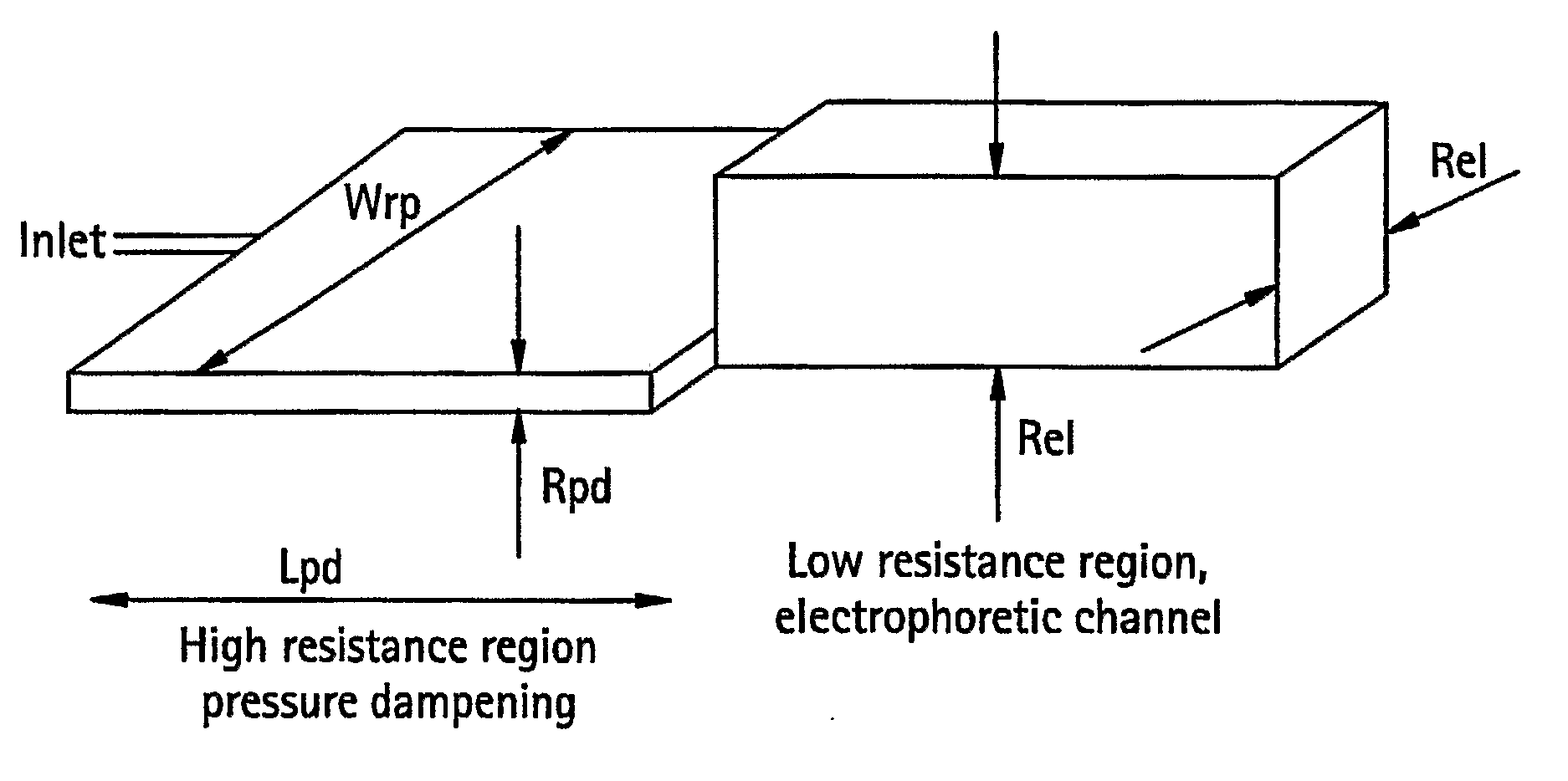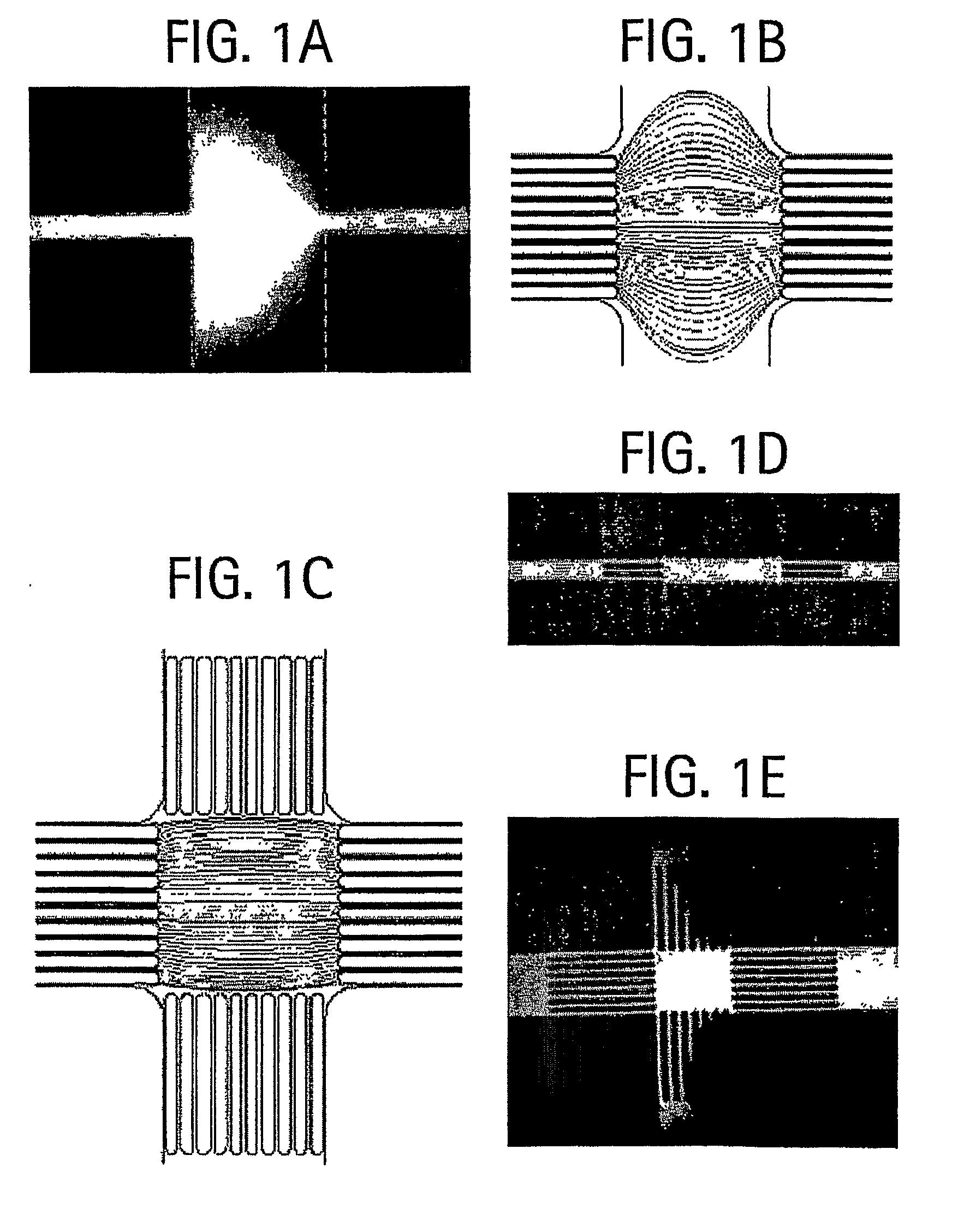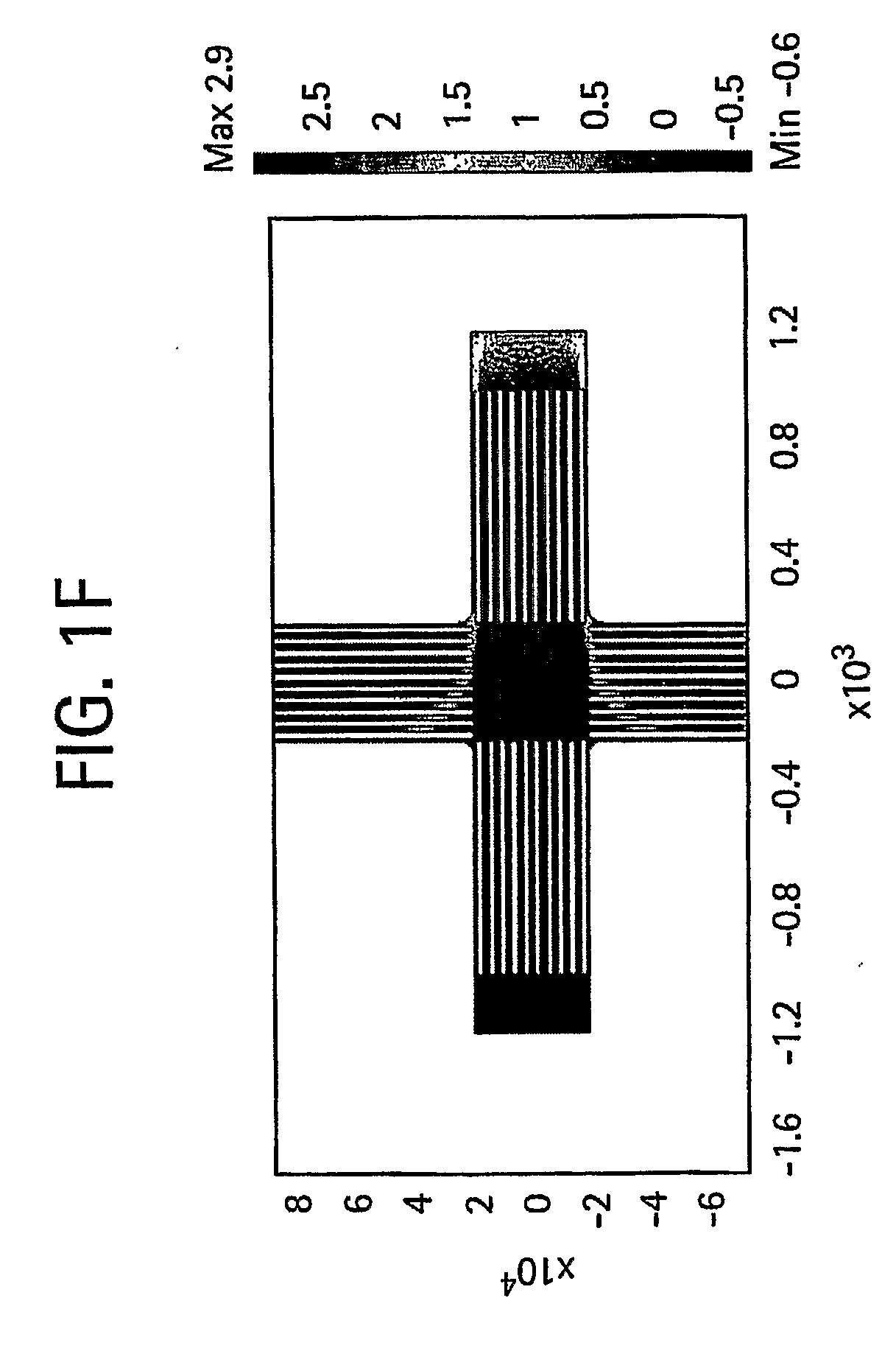Devices Exhibiting Differential Resistance to Flow and Methods of Their Use
a technology of differential resistance and flow, applied in the direction of fluid pressure measurement, liquid/fluent solid measurement, peptide measurement, etc., to achieve the effect of the same resistan
- Summary
- Abstract
- Description
- Claims
- Application Information
AI Technical Summary
Benefits of technology
Problems solved by technology
Method used
Image
Examples
Embodiment Construction
[0027]The invention provides devices that include structures that exhibit differential resistance to flow, e.g., under electric-field-driven flow or pressure-driven flow. Such devices allow for the miniaturization of sample distortion and the dampening of pressure-driven flow. In addition, the devices may also be employed for filtration of particulate samples or controlled contacting of reagents with other compounds, cells, or viruses.
Anisotropic Resistance to Flow
[0028]Electric Field. In this embodiment, the invention provides a microfluidic device capable of shaping an applied electrical field such that a plug of sample, i.e., a volume of fluid in a channel, can be introduced into an intersecting channel with low dispersion. The devices include a structure that produces anisotropic flow under an applied electric field. For example, the structure allows for greater flow parallel to the electric field than orthogonal to the electric field. Although illustrated with channels intersec...
PUM
| Property | Measurement | Unit |
|---|---|---|
| width | aaaaa | aaaaa |
| width | aaaaa | aaaaa |
| pH | aaaaa | aaaaa |
Abstract
Description
Claims
Application Information
 Login to View More
Login to View More - R&D
- Intellectual Property
- Life Sciences
- Materials
- Tech Scout
- Unparalleled Data Quality
- Higher Quality Content
- 60% Fewer Hallucinations
Browse by: Latest US Patents, China's latest patents, Technical Efficacy Thesaurus, Application Domain, Technology Topic, Popular Technical Reports.
© 2025 PatSnap. All rights reserved.Legal|Privacy policy|Modern Slavery Act Transparency Statement|Sitemap|About US| Contact US: help@patsnap.com



